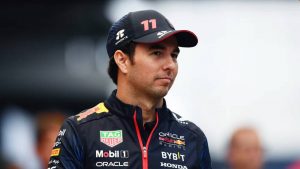Charlie’s Digs
In August 1968, I walked three blocks from my home in Bogota, Colombia to watch Pope Paul VI go by in an open-topped limousine. It was the first time a pope had traveled to Latin America. I’m not Catholic, but I’ve been fascinated with papal trips ever since.
Little did I know that in 1968 the Latin American Catholic Church was on the brink of a major schism with Rome.
Schism is on the mind of Pope Francis. Last Friday Vatican spokesman Federico Lombardi announced a change in the pope’s travel plans. Pope Francis will stop in Havana for a brief, unprecedented meeting with Patriarch Kirill I, leader of the Russian Orthodox Church.
The ambitious intent of this pontiff is to heal a church wound dating back to the 11th century — the Great Schism of 1054 between the Christian Churches of the East (Orthodox) and West (Roman Catholic).
According to Vatican press releases, preparation for this meeting has been going on for a couple of years. Patriarch Kirill requested that it be held in neutral territory. On Friday, the two prelates’ paths will thus cross at Havana’s José Marti International Airport. Patriarch Kirill will be in Cuba on a previously scheduled official visit and Pope Francis will be in the last two hours of his flight from Rome to Mexico City.
The Great Schism of 1054 came as a result of Pope Leo IX’s delegates packing their bags and returning to Rome from a meeting in Constantinople. It was not an amicable departure — both delegations mutually excommunicated each other.
The two branches of the church differed over the use of Greek or Latin, leavened or unleavened bread in the Eucharist, and the source of the Holy Spirit. They would go on to war against one another for centuries.
In 1965 Pope Paul VI and Patriarch Athenagoras presided over simultaneous ceremonies revoking the mutual excommunication degrees. But further progress has been slow arriving. Next Friday’s meeting will be the first between a Patriarch of Moscow and All Russia and a Roman Catholic pope.
Havana will serve in its longstanding tradition of being the link between Europe and America. Pope Francis will continue to work his magic in diplomacy. He is, of course, given much of the credit for the restoration of U.S.-Cuban diplomatic relations.
Vatican Spokesman Lombardi read his press release about the meeting in Havana on Friday, February 5. Later that day I attended a memorial Mass co-celebrated by Father Angel Sanchez.
When I think of Father Angel, I remember a story he told me involving the Schism of 1054 — and averting a similar schism in Latin America in 1968.
Pope Paul VI was in Bogota to inaugurate the Latin American Bishops Conference (CELAM), now known as the Medellin meeting. Then the pope returned to Rome and the bishops flew to Medellin for a week-long meeting. Cardinal Antonio Samoré represented the pope and the Curia.
There was effervescent excitement in the Latin American Catholic Church. Theologians had been developing a new Theology of Liberation after the Second Vatican Council endorsed a preferential option for the poor. Theological interpretation was changing quickly. It seemed that Cardinal Samoré had been entrusted with putting the brakes on liberalism among the Latin American bishops.
Let’s listen to Father Ángel: “This was told to us by Bishop Cândido Padín (a Brazilian Benedictine), present at the 1968 CELAM meeting.
“During the Medellin conference Cardinal Samoré (the pope’s delegate) wanted to leave and abandon the meeting, because he said ‘This is all communism!’
“The conference’s presidential committee had to decide what to do. Chilean bishop Raul Silva said, ‘I need to talk with him.’
“Silva insistently knocked on the door of the Cardinal’s room for an hour. Finally, Cardinal Samoré opened the door. Bishop Silva succinctly queried, ‘Do you remember, Señor Cardenal, that the 1054 Schism with the Church of the East was caused when the pope’s delegates returned to Rome?’
“That’s all the Chilean bishop said to the Cardinal. The Cardinal rejoined the meeting.
“In fact, Samoré became so enthralled by the work the Latin American Bishops were accomplishing that he no longer saw communism. He saw faith alive. His view was transformed to the point that when the meeting ended he called Pope Paul VI with great enthusiasm, and the pope authorized that the meeting’s documents be given directly to the press without passing Curia inspection.
“Cândido Padín said that they are the only documents from a meeting of this kind that have not gone through the hands of the Curia. All of the rest, Rio de Janeiro’s, Puebla’s, Santo Domingo’s, come to us via Rome. Medellin’s went directly from the meeting to the press. But Padín added, ‘Samoré’s career ended there. The Curia never forgave him.’”
This will be an exciting week for Mexico as this most popular of popes spends nearly a week visiting various cities in Mexico. There will be many young people who will share memories similar to mine of seeing His Holiness roll down streets lined with cheering well-wishers.
Anthropologist and longtime Cuernavaca resident Charlie Goff can be reached at <[email protected]>. Carol Lamb Hopkins, Cuernavaca resident, former teacher and school administrator collaborates on this column. Previous Charlie’s Digs are posted at charliesdigs.com.










